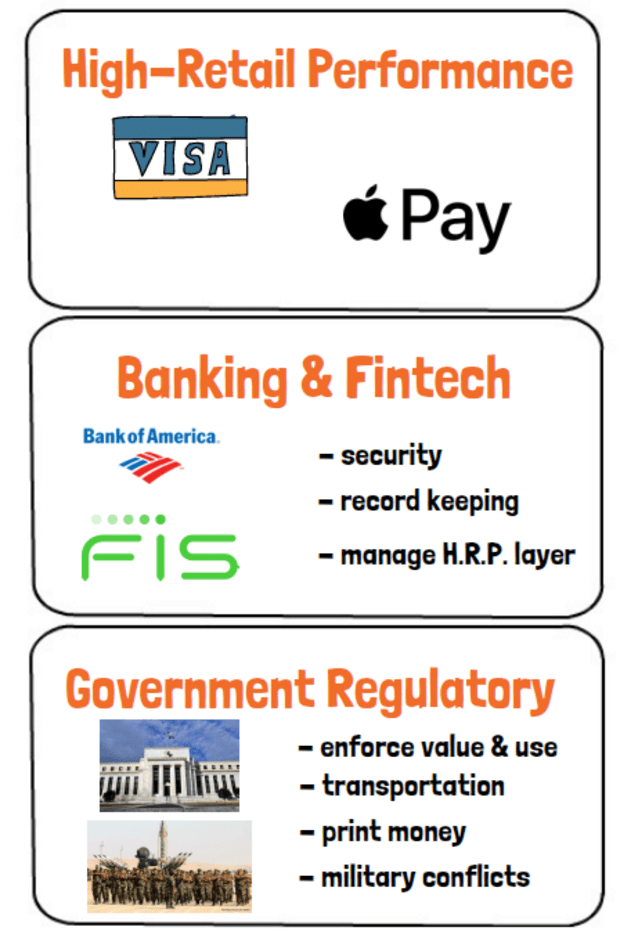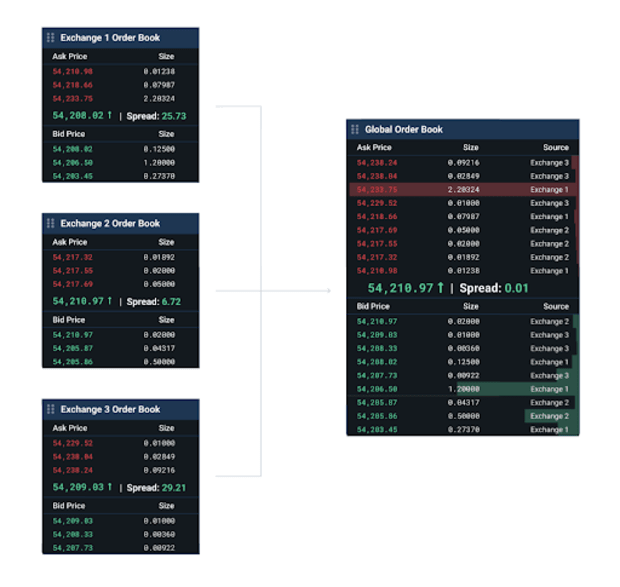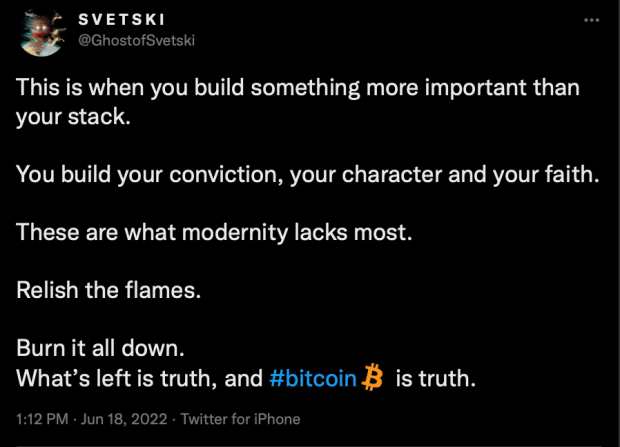Bitcoin: The First And Final Rival Money
A Weekly Series Of Essays About The Language Of Bitcoin by Alex McShane
Lingua Contra Imperium
The Language of Bitcoin: 3
TL;DR – Bitcoin is the first monetary technology of its kind. It is also the last. If you insist on summing up our good and sound money with a broken monetary measure such as the dollar, you will forever be confused about the state of the financial world. The dollar’s infinite expansion will lead you to believe you have more Bitcoin than really you do.
Rational
Hard money pervades absolutely. When I say hard money pervades absolutely I am not talking about the price of Bitcoin. I’m talking about its ever-growing user base, who refuse to have their property adulterated and their money debased. Hard money pervades by way of slow and steady adoption. It is the process of knowledge being shared among a community.
A rational population that recognizes Bitcoin as the strongest store of value, and the easiest property to amass and protect, would exit the housing and the stock markets and pour into Bitcoin. If they were rational, people who sought stores of value in things that are of potentially unlimited supply, such as stocks, gold and real estate, would forsake these cumbersome objects for Bitcoin, which as we know is limited, and more salable across time, space, and scale than anything that’s come before.
The market is not rational. Nonetheless, Bitcoin adoption grows. Whether you believe Bitcoin adoption to be occurring too slowly or too quickly, the fact remains that there is a growing population of people for whom Bitcoin is the final money.
That is, we have chosen to exit the dollar, for good, because as Bitcoiners we recognize that we hold the superior asset class. Once we understood that, we found no rational reason to expose ourselves to the centralized financial risk that comes with holding lesser asset classes such as dollars, which are a primitive and an objectively inferior form of nascent money.
It seems unlikely that the person who first grasped the concept of a wheel could have kept this idea private. In this way Bitcoin will not stay niche, but rather, it will become ubiquitous, global money. Societal memes are ideas that are too good to stay niche. One of the fundamental features of lasting ideas that spread throughout society is that their use case is undeniable and easy to perceive.
One doesn’t have to have a technical understanding of how Bitcoin works to use it in the same way the overwhelming majority of people who fly in airplanes don’t have an engineering background or a clear understanding of how exactly it is they are flying. Bitcoin, like the wheel and the airplane, is too good of an idea to stay niche. Bitcoin’s success as a network ought to be measured less by its dollar price action and more through the growing number of people familiar with its most basic use-cases as a hard store of value, an immutable money, and as the most secure form of property, all traits for which it has no peers. Bitcoin promotes its own production and inhibits its destruction at the expense of energy, time, and that of its rivals.
So although the market in aggregate is not rational, and we may individually often make irrational financial decisions, the absolute advantage of holding Bitcoin over fiat is becoming undeniable. Ignore it, and you will soon look over your shoulders to find your friends and neighbors enjoying freedoms that you cannot afford.
In our quest to bring monetary freedom to the world we will succeed because we will hodl Bitcoin longer than the market can remain irrational.
Irrational
The market is irrational. People are irrational. Their trades are predicated on their limbic system, their immediate wants. They want to get rich quickly. Their time preference, in aggregate, is very high. Most Americans behave in a way that befits the title of consumer over that of producer. Americans in aggregate are not capitalists. Capital production requires the reallocation of resources and capital, and not their absolute consumption. Americans rather, make choices every day to consumer rather than produce, with money that they do not really have, and as was discussed last week’s essay, delayed gratification is key to a successful life of capital accumulation. Unfortunately, Most people make impulsive, emotionally influenced, high-time-preference financial decisions.
Holding Bitcoin is not only exiting the U.S. dollar, it is recusing yourself from the need to constantly make difficult financial decisions and trades. Buying Bitcoin tends to become an organizing financial principle for hodlers. The strategy is simple:
1) Trade your time to create value for others daily.
2) Trade this value for capital.
3) Trade some capital for Bitcoin.
4) Deploy the remainder of capital to increase your means of production to create more value for more people.
5) Trade profits for Bitcoin.
6) Hodl indefinitely.
*The in-between step is do not consume your capital.
If you find yourself perpetually on steps 4 and 5 you might be a financially productive person. There is no limit to how productive a person can be. The common denominator of this process among bitcoiners is that we are constantly buying and holding Bitcoin. We’re effectively making one solid trade tirelessly, out of U.S. dollars and into the superior asset class. In doing so we’re taking activity bias, emotions, and high-time-presence impulses completely out of the financial equation. It’s quite liberating.
CAGR
No Bitcoiner who has held their stack for at least four years has lost money when denominated in fiat terms. And after just months of holding Bitcoin it dawns on most that perhaps the benefits of hodling increase as time goes on. Indeed, the longer you have held Bitcoin, historically, the greater your reward in fiat terms. You have gained buying power and you have also maintained and appreciated your wealth. This is cannot be done when holding dollars only.
Newcomers to Bitcoin largely come for this “number go up” technology, meaning they want to watch their wealth appreciate in U.S. dollars, which is admittedly exciting and fascinating to behold for the first time. As you hodl it becomes increasingly difficult to turn a blind eye to the U.S. dollar price of your Bitcoin stack. You may even begin to understand and experience the fiat based formula for compounding annual growth rate (CAGR).

People who think of Bitcoin as an investment might run the dollar value of their Bitcoin stack through this formula. Over the years it will yield increasingly impressive results in fiat terms, which is fun and good. But at what rate are you compounding your Bitcoin stack? Somewhere along the trajectory of perpetual learning that Bitcoin incites, many cross an event horizon, after which, there is no more trading back into dollars. There is only forsaking dollars for Bitcoin. For many bitcoiners it is after this point in understanding that Bitcoin ceases to become an investment, and begins to become a lifestyle.
The CAGR equation looks much different if for the beginning and ending values you input amounts of Bitcoin, rather than the same Bitcoin’s value in fiat terms. This perspective of the CAGR will likely give you more incentive to increase your productivity, rather than remain idle and content with your stack. Remember, Bitcoin’s value when compared to every fiat asset will always rise, because assets which can be issued by decree are unlimited in number. If you value your Bitcoin in fiat terms, the numbers are sure to impress you over time, but you probably won’t accumulate with the same urgency you would had you understood your Bitcoin on its own terms. When valuing your Bitcoin in fiat terms you risk complacency. Number go up is besides the point.
So the longer people hold Bitcoin, generally, the more inclined they are to think of equations like the CAGR in Bitcoin terms? Actually, I would postulate that by denominating your Bitcoin in fiat terms you are subliminally priming yourself to one day execute a trade out of the hardest money in the world. It follows that most long-term hodlers value their Bitcoin in Bitcoin terms.
The longer you think of your Bitcoin in fiat terms the less likely you are to become a long-term hodlr who denominates your Bitcoin in Bitcoin terms. So there’s a survivorship bias among long-term Bitcoin hodlers. We tend to overlook or under appreciate just how many denominated their bitcoin in fiat terms and never functionally recognized that 1btc=1btc, and as a result didn’t make it.
If you insist on summing up our good and sound money with a broken monetary measure such as the dollar, you will forever be confused about the state of the financial world. The dollar’s infinite expansion will lead you to believe you have more Bitcoin than really you do.
Remember that when people speak of the price fluctuation of Bitcoin denominated in U.S. dollars, this is an entirely misguided understanding of what Bitcoin is. Bitcoin itself is agnostic to U.S. dollars. Naturally when comparing a scarce asset to an infinite asset, you will perceive extreme volatility.
The most maximalist among us might say that if you’re trying to use Bitcoin to make “bank”, you’ve lost the plot. Your Bitcoin is your net worth. The dollar price of your Bitcoin is meaningless.
There’s no reason to discourage people who are thinking in fiat terms, as surely no one alive was raised without learning to think in this way. The test is really whether and to what extent one can begin to denominate their life in Bitcoin terms. The change in character this brings about, the renunciation of an old and errant way of life, one littered with misunderstandings, is why bitcoin maximalists often have the luster of something like the newly sober, the honeymooning, or the very religious.
The current transition from a fiat worldview to a Bitcoin worldview predicates on one having been wrong about basically everything. Ergo, most adults don’t, and won’t understand Bitcoin. But the first few kids who were raised on a Bitcoin standard are soon to enter their teenage years.
It is when this nascent generation of bitcoiners begins to participate with consequence in the global markets, and they in turn raise more children on a Bitcoin standard, that the scales will really tilt in our favor.
Rival
Every monetary vehicle outside of Bitcoin is in competition with it, and will have its monetary energy drained from it, because Bitcoin is the only rivalrous money. Rivalrous means every Bitcoin I own is one you can’t own, unless I transact with you or give you access to my private keys. Think of MicroStrategy. Think of all the Bitcoin supply Michael Saylor has taken off the table. Does this not incentivize you to double down on your stacking efforts? It’s supposed to. When a good is scarce, it incentivizes competition. Bitcoin is the only rivalrous asset. Fiat and gold are both horns of plenty.
Gold is non-rival. I could in theory acquire gold until the end of my days and it wouldn’t effect how much gold is available to everyone else. It isn’t scarce. The total supply of gold is in direct proportion to the resources that are allocated toward mining it. Gold can be mined until there is no more of it left in the universe. Even in terms of the local gold supply, we haven’t even begun to scratch the surface of the Earth.
Bitcoin is very much a bounded game. Inversely, fiat is an unbounded game of cards, meaning it expands so on ad infinitum. That is, there is no limitation imposed by the tools of the fiat game. They are not playing with a definite supply of numerals but instead with a system for constructing numerals indefinitely.
The government may claim ignorance of the fact that it has created a system for printing money indefinitely. The most insidious and savvy of governments enjoy this exploitation of their citizens time and energy somewhat covertly. The population has been misguided for so many generations it just takes taxation and simultaneous currency debasement as an unavoidable fact of life.
But the money printing is overt now. They’ve abandoned the phase of pretending it’s only temporary, or that they are raising the debt ceiling just a little more to get through X or Y crisis. The crises are chronic. Always have been. If I had to make a future prediction I would forecast that virtual emergencies and cyber pandemics are next. People are desensitized to real world problems. It appears to me that the majority of us are already isolated, functionally comatose, living in an entertainment state of perpetual catatonia. This is a topic for another time. Do not surrender your ability to think and speak freely.
There was no “well intended” or ignorant government phase. If governments didn’t understand the power of exploiting the money printer we would still be using objects we chose to meet our coincidence of wants. We would store all of our wealth in things like goats or shiny rocks. But even in the age of gold, the government found ways to clip and debase the currency.
In Bitcoin, you can imagine what ties our digital ship to the wharf as rope. The rope consists of fibers. The rope does not get its strength from any one fiber running through it, but rather from the fact that there is a vast number of fibers overlapping. The metaphor is more apt if you imagine many ships secured with thousands of ropes. As nodes we are attesting to a single history, a single order of these ships, our anchors are myriad and decentralized.
Bitcoin is rivalrous and bounded. The process of Bitcoin accumulation offers you healthy competition and fraternity for life. It incentivizes cooperation to facilitate capital growth. Every Bitcoin you own is one I can’t, but perhaps if we collaborate to provide a service, we can both increase our stack. Meanwhile every Bitcoin that is lost is removed from the conversation entirely.
Time
Nietzsche said that what can happen must have happened before.
This is not so.
It must be stressed that before Bitcoin, it was impossible to associate events with points of time in decentralized systems.
Bitcoin emerged, in part, from an effort to work around trusting third parties to time stamp digital documents. Centralized time servers are inaccurate to degrees that may seem minute to humans, but in terms of ordering transactions on a ledger, it is imperative that there be no discrepancy. Remember that even the time dilation between a person on the ground and a person on a plane is enough to make the order of their transactions on a ledger inaccurate. This why Bitcoin doesn’t rely on any third-party time-keeping server.
Satoshi originally designed bitcoin as a digital time-stamping server, as found on the first page of the White Paper: “In this paper, we propose a solution to the double-spending problem using a peer-to-peer distributed timestamp server to generate computational proof of the chronological order of transactions.”
Or as found on the second page: “We need a system for participants to agree on a single history […]. The solution we propose begins with a timestamp server.”
Consequently Bitcoin has become the only decentralized narration of past events in the world. No history is comprehensive, nor is it intended to be. When we talk about history it is a mistake for us to try and account for causation. Humans cannot perceive causation, only a succession of events.
In the universe, most of what occurs is too fast or too slow. Too big, too small, too far, too close, or invisible. Thus, you can imagine Bitcoin as but one lens through which to view the history of the modern world. What’s unique about our framing is that this story is completely decentralized, and the longest chain has undergone the most proof of work to secure this history. Bitcoin is the story we’ve agreed upon.
There is no centralized time mechanisms for Bitcoin. It runs irrespective of our clocks. Every individual tick of the Bitcoin clock is unpredictable. Relative to our clocks, the Bitcoin clock appears to be imprecise and spontaneous. But this is irrelevant, as Gregor Trubetskoy points out: “It doesn’t matter that this clock is imprecise. What matters is that it’s the same clock for everyone and the state of the chain can be tied unambiguously to the ticks of this clock.” So the Bitcoin clock is probabilistic, but it isn’t illusory.
When does the future become the present?
Bitcoin accounts for this. The mempool is a description of the future, a forecast we’ve committed to bring to carrying out.
Where does the present go when it becomes past?
Bitcoin accounts for this too. Nodes usher blocks present into the past, where they are recognized again and again, many times per day by every node, as past.
The longest chain serves as proof of the sequence of events witnessed, and also proof that it came from the largest pool of CPU power. In this way, Bitcoin is also proof of story.
Future
Bitcoin is the first monetary technology of its kind. It is also the last. Most people have yet to realize that Bitcoin is the culmination of civilizations’ failures at creating money.
The seeds of global Bitcoin adoption were planted at its birth and our only job now is to water and tend to them. Bitcoin is the first money the world has ever seen and the last money it will ever see for centuries to come.
29 August 2021
Read The Language of Bitcoin: 2: “Bitcoin Alleviates Future Uncertainty”
Read The Language of Bitcoin: 1: “BTC Is The Best Explanation For The Way Money Is”









